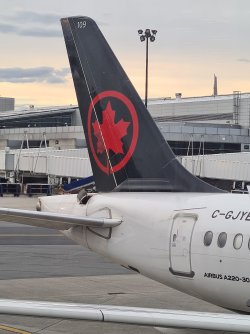Did any model of the 747 have a RAT?The engines weren’t running. They were turning happily enough. The ash melted as it went through the burners, but then cooled enough to accrete on the turbine blades, changing their shape slightly, and causing the engines to to compressor stall. Restarting in denser air certainly wasn’t guaranteed, but the mach number would have been lower, making the engines less susceptible to the effects from the ash.
Think about it, if a 747 lost all of its hydraulics then the aircraft would be unflyable. The flight controls cannot be moved manually, only hydraulically. And without electrics, how would you restart anything. You cannot start the APU of a 747-400 in flight. For a windmilling start you need the IAS to be as high as possible to a minimum of around 250 KIAS. If they maintained their cruise speed, that would have been about 320 KIAS and at that speed the hydraulic pumps should work normally. The hydraulic pumps will hang in until about 150 KIAS. Not sure about when the generators would have dropped out...the best answer seems to be that you'd need to keep the IAS high.
I'll see if I can track down some more info about the generators. The manuals don't tell us much. I do recall that in some instances of engine failure, a generator warning was the first thing you got, so the margin in which they work may be quite narrow.
It gets more interesting. The actual report doesn't seem to be available, but I found this quote:
The crew were somewhat surprised to observe that loss of all generators had evidently not occurred as a result of the engine failures as there was no evidence of the electrical load shedding that, in corresponding simulator training, had occurred in such circumstances. Given the workload of attempting successive engine restarts during a glide descent in IMC, a key result of this was that the Captain’s AP was still useable.
So, that's probably the definitive answer. The generators stayed online, possibly though luck, and the APU wasn't used.
You are using an out of date browser. It may not display this or other websites correctly.
You should upgrade or use an alternative browser.
You should upgrade or use an alternative browser.
Ask The Pilot
- Thread starter NM
- Start date
- Featured
jb747
Enthusiast
- Joined
- Mar 9, 2010
- Posts
- 13,147
Not that I know of. With four engines it was considered unnecessary. And not all RATs are equal. Some provide electricity, but others only act as hydraulic pumps. And I guess some do both.Did any model of the 747 have a RAT?
Read our AFF credit card guides and start earning more points now.
AFF Supporters can remove this and all advertisements
jb747
Enthusiast
- Joined
- Mar 9, 2010
- Posts
- 13,147
Correct. There’s something similar on most aircraft. Not all are covered by a hatch when closed, but most are, for drag, noise, vibration, reasons.Maybe air intake for the APU
jb747
Enthusiast
- Joined
- Mar 9, 2010
- Posts
- 13,147
That would just blow through.I thought it could be toilet exhaust
jb747
Enthusiast
- Joined
- Mar 9, 2010
- Posts
- 13,147
#1 wouldn't shut down at all. The reason was actually a safety system, working as it was designed. Basically to ensure that an electrical failure can't shut down the engines, the spar valves fail to the open position. If not for that design, the valves may have closed when the initial failure happened, and so shut down another engine.JB with QF 32 in Singapore accident I understand one of the engines took a long time to shut down .
Do you know if any changes were made to the systems to avoid the same problem in the future?
The engine was eventually shut down by drowning it, but even then it resisted, with the autostart kicking in to relight it as it started to wind down. So, then they got a bigger fire truck and tried again.
No changes, nor should there have been.
Captain Halliday
Established Member
- Joined
- Jun 1, 2014
- Posts
- 4,904
Wind shear, or something else?
- Joined
- Nov 12, 2012
- Posts
- 28,892
- Qantas
- Platinum
- Virgin
- Platinum
- Star Alliance
- Gold
I bet JB and AI wish that had/have that guy commentating on their landings. 
AviatorInsight
Established Member
- Joined
- Oct 5, 2016
- Posts
- 1,340
I felt that just sitting on the couch! Wind was a steady 240/12, so straight down the runway for 24R.Wind shear, or something else?
It looks to me as though they just didn’t flare at all. If you watch the second attempt, it almost looks like they were going to do it again but looked like there was a sudden pull into the flare at the last second and saved it.
Can I ask also, why the forward input on the control column at 1.03?
Second attempt they certainly held it off.
Just before they hit the control column was pulled back. The “forward“ movement was a relaxation of the control column to get the nose back down before pulling back again to arrest the sink on the second touchdown and holding that in until the go around.
jb747
Enthusiast
- Joined
- Mar 9, 2010
- Posts
- 13,147
Misjudged it. Given the conditions seem pretty mild, the aircraft is moving around a bit on the approach, so I get the feeling that he's 'stirring the stick'. The flare is too late. Touches down with a lot of back stick, which starts the aircraft rearing up on landing. So, a forward input to get the nose down, but then a rear input to control the rate. And then the spoilers start to rise, which adds to the nose up tendency. Very poor pitch control. Watch the elevator.Wind shear, or something else?
AV, when you flew the Australia to Japan flight, did you see much of interest re numbers as you crossed the equator? Going from Southern to Northern Hemisphere on such a direct north track crossing the zone sounds like would be interesting to see all the met changes along the way.
- Joined
- Jun 7, 2006
- Posts
- 11,515
- Qantas
- LT Gold
Misjudged it. Given the conditions seem pretty mild, the aircraft is moving around a bit on the approach, so I get the feeling that he's 'stirring the stick'. The flare is too late. Touches down with a lot of back stick, which starts the aircraft rearing up on landing. So, a forward input to get the nose down, but then a rear input to control the rate. And then the spoilers start to rise, which adds to the nose up tendency. Very poor pitch control. Watch the elevator.
AviatorInsight
Established Member
- Joined
- Oct 5, 2016
- Posts
- 1,340
I haven’t done that flight. It’s a 5 day pairing which goes outside of our agreement of being able to do 4 day trips. So because of that pilots need to opt in to want to do it.AV, when you flew the Australia to Japan flight, did you see much of interest re numbers as you crossed the equator? Going from Southern to Northern Hemisphere on such a direct north track crossing the zone sounds like would be interesting to see all the met changes along the way.
Because the trips that are paired before and after the HND flight to/from CNS is incredibly fatiguing, not to mention the back of the clock flight itself for 8hrs, I haven’t opted in to operate it.
If they fix up that issue along with getting a proper aircraft to go on that route then I may look into it.
- Joined
- Oct 13, 2013
- Posts
- 16,065
Please explain. Thx5 day pairing
Interesting thanks.I haven’t done that flight. It’s a 5 day pairing which goes outside of our agreement of being able to do 4 day trips. So because of that pilots need to opt in to want to do it.
Because the trips that are paired before and after the HND flight to/from CNS is incredibly fatiguing, not to mention the back of the clock flight itself for 8hrs, I haven’t opted in to operate it.
If they fix up that issue along with getting a proper aircraft to go on that route then I may look into it.
Would any extra classroom training be required before operating your first flight into such a place?
AviatorInsight
Established Member
- Joined
- Oct 5, 2016
- Posts
- 1,340
It’s essentially a 5 day trip. Our current agreement only states that we can be rostered up to 4 days away from home.Please explain. Thx
If you look at the pairing, there is no CNS based crew, so we need to get up to CNS on day 1. Day 2 is VA77. Day 3 is VA78 landing on Day 4. We need 30hrs rest after a red eye, so we get back home on Day 5.
Because this is outside of our agreement, pilots need to put their hand up to be rostered to fly it.
Nope. Just a big 100 page document to wade through. Plus I’ve got a couple of mates flying for ANA to give me a run down if needed.Interesting thanks.
Would any extra classroom training be required before operating your first flight into such a place?
We did do a tour during the last sim session and flew around Tokyo, did some taxi practice and a couple of approaches followed by the missed approach procedure too.
Become an AFF member!
Join Australian Frequent Flyer (AFF) for free and unlock insider tips, exclusive deals, and global meetups with 65,000+ frequent flyers.AFF members can also access our Frequent Flyer Training courses, and upgrade to Fast-track your way to expert traveller status and unlock even more exclusive discounts!

AFF forum abbreviations
Wondering about Y, J or any of the other abbreviations used on our forum?Check out our guide to common AFF acronyms & abbreviations.
Currently Active Users
- zig
- pauldab
- http_x92
- lazblue
- L2.
- anat0l
- pauly7
- Warragul
- Matt_H
- tgh
- flyingfan
- jase05
- dylarr
- goonerz_goner
- nancypants
- ThePW
- gaz0303
- Dmac59
- VPS
- frodo
- Cessna 180
- jrfsp
- vmile
- Flyfrequently
- Stone
- Himeno
- SYD
- henleybeach
- jkbaus
- Letiha
- dajop
- Mqrko
- Quickstatus
- mrs.dr.ron
- DejaBrew
- Daventry
- I love to travel
- Sbv72
- OZDUCK
- Austman
- burmans
- ABC1
- jason_c
- Fridge
- darv
- VantageXL
- newmarket
Total: 829 (members: 56, guests: 773)






















